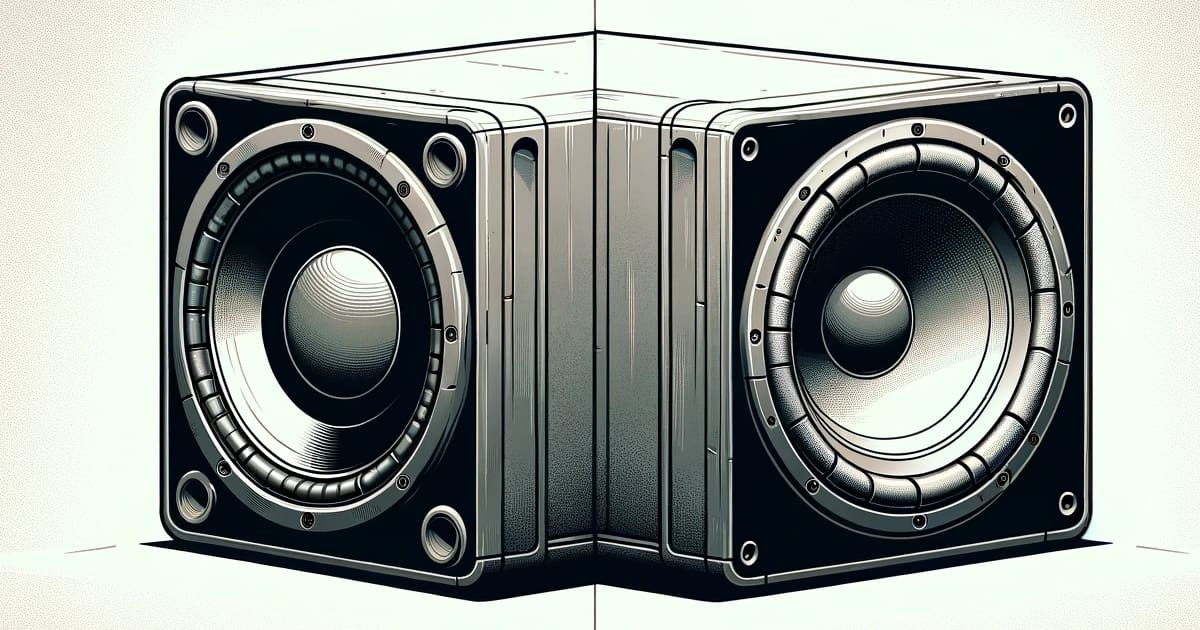As we’ve mentioned many times, adding a subwoofer is one of the best upgrades you can make to a car audio system. We know that having a shop construct a custom enclosure isn’t always in the budget. Likewise, while impressive, high-end subwoofers aren’t in everyone’s price range. With all this said, there is one item that you should spend a few dollars extra on: a ported enclosure. Let’s look at why a ported enclosure is crucial to creating an affordable subwoofer system that will deliver the performance you likely want without breaking the bank.
Your Factory Stereo Likely Doesn’t Produce Bass Frequencies Well
Before we get into why you should choose a ported enclosure for an affordable subwoofer upgrade, we should discuss why a subwoofer is important to the performance of a car audio system. Imagine a basic stereo system with a radio and four speakers. The radio might be capable of delivering 20 watts of power to each of those speakers. If you want to play music with a lot of bass at higher volumes, the radio will quickly run out of power. When this happens, the signal from the amplifier chip in the radio will be distorted, and your music will sound garbled.
The second issue, which might be more important, is that the four speakers in your car likely aren’t designed to reproduce bass frequencies efficiently. Typically, factory-installed speakers have relatively light cone assemblies so that they are efficient. The speakers are usually most efficient from 80 or 100 hertz and up. Part of keeping the mass of the cone assembly down is using a lightweight, short voice coil. As such, cone excursion is often limited to a few millimeters in each direction. If a speaker can’t move much air, producing bass at higher volume levels is nearly impossible.
An Affordable Subwoofer Upgrade Is Important
When a subwoofer is added to a stereo system, the small speakers don’t need to try to produce bass frequencies. This means the radio doesn’t have to deliver as much power to the speakers, and the speakers don’t have to work as hard. The result is that the system will sound better and play louder. If the subwoofer system is designed correctly, you’ll get much more bass output and extension. The little amp in the radio and the factory-installed speakers aren’t stressed, so they’ll be much clearer.
Speaking of power, it’s also important to remember that an entry-level subwoofer’s power handling and excursion capabilities will be limited. You want to choose the largest driver you can and use it in a properly designed enclosure to get the maximum performance. The latter is the focus of this article.
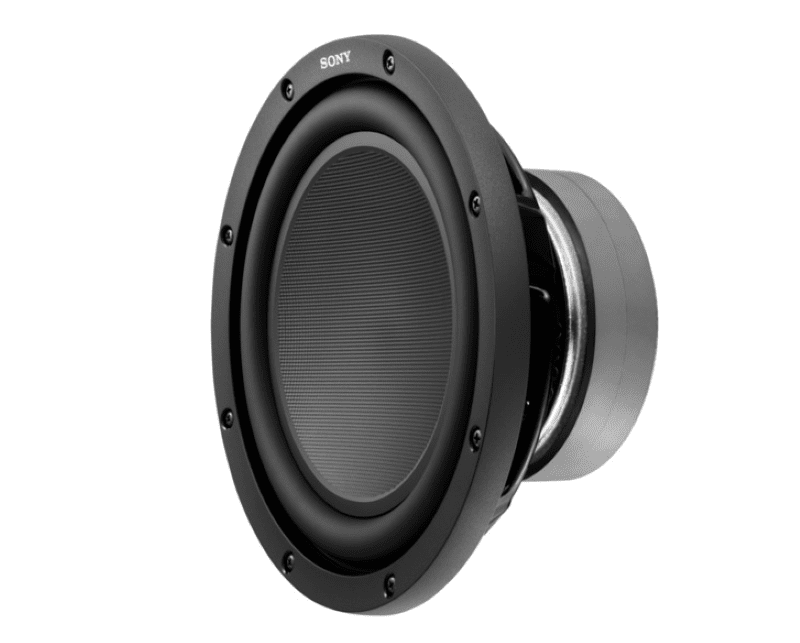
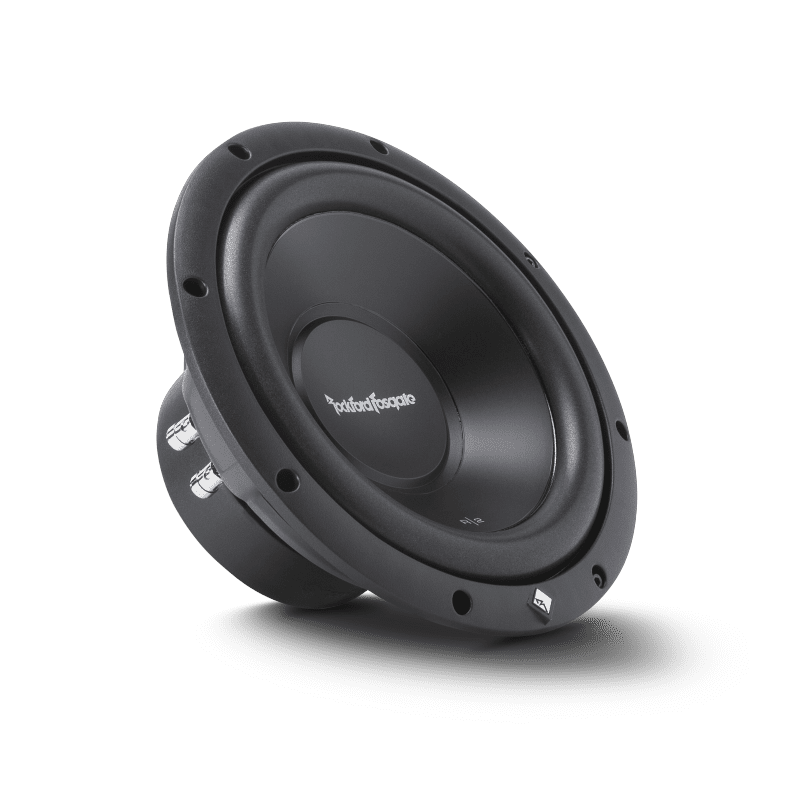
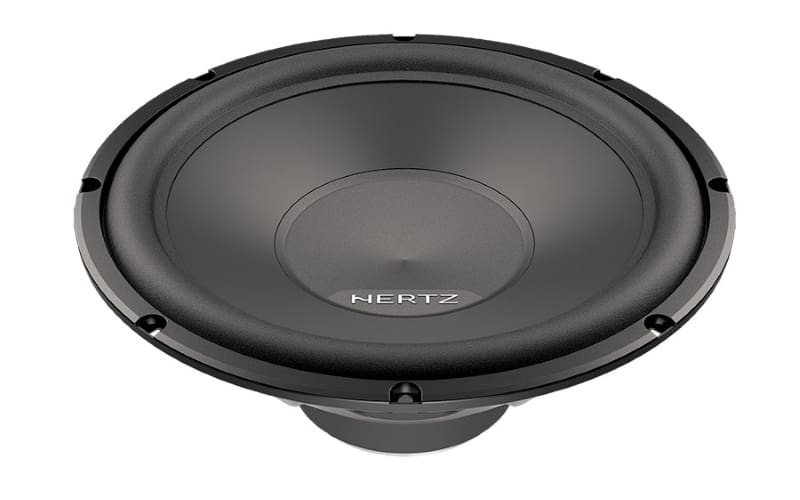
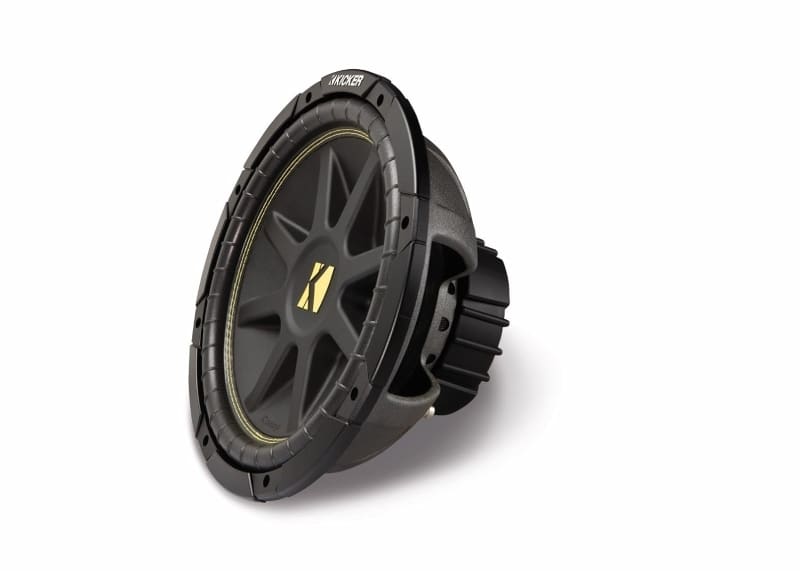
What Is a Subwoofer Enclosure?
Now, let’s talk about subwoofer enclosures. Why does a subwoofer need an enclosure at all? The primary purpose of a subwoofer enclosure is to prevent the sound coming off the back of the subwoofer cone from mixing with the sound coming off the front and canceling. If you hold a subwoofer in your hand and play music, it won’t produce any bass. If you cut a hole in a wall and mount the subwoofer into it, you’ll hear lots of bass on either side of the wall. This is similar to what happens when a subwoofer is mounted on the rear parcel shelf of a sedan. The sound coming from the back of the subwoofer gets trapped in the trunk. The sound from the front fills the cabin.
The second purpose of a subwoofer enclosure is to act as a high-pass filter. Yes, this seems contradictory to adding a subwoofer at all. Subwoofers need a high-pass filter so they aren’t damaged at extremely low frequencies. If you send an 80-hertz test tone to a subwoofer, it might move back and forth a millimeter. Playing a 40-hertz tone, the subwoofer cone would likely move 3 millimeters. If we try to reproduce a 20-hertz tone, the cone will move over 5.5 millimeters.
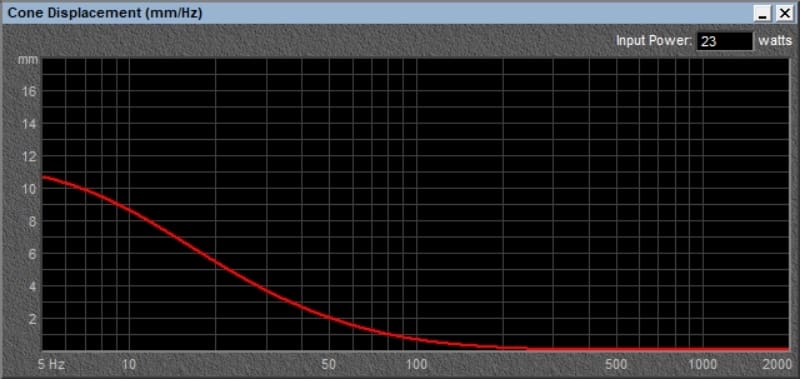
We scaled the graph above to display 1 millimeter of excursion at 80 hertz. That level of output requires only 23 watts of power. The enclosure used in the simulation has a volume of 20 cubic feet, rendering it useless in controlling subwoofer cone motion.
Subwoofer Excursion at Higher Power Levels
Now, 23 watts of power into a subwoofer is likely louder than you think. With that said, many likely want the bass to be louder. So, what happens if we send 100 watts to the subwoofer?
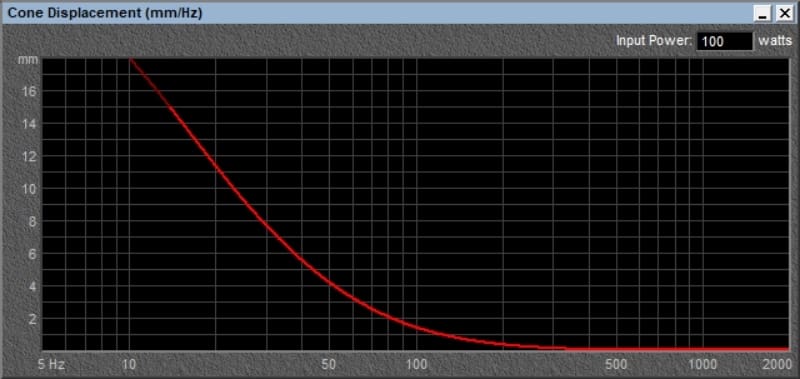
Now we have 11.4 millimeters of excursion at 20 hertz, 5.5 millimeters at 40 hertz and 2 millimeters at 80 hertz. The subwoofer has an Xmax specification of 15 millimeters, so we’re safe, right? What if we increase the signal to the 250-watt limit of the subwoofer?
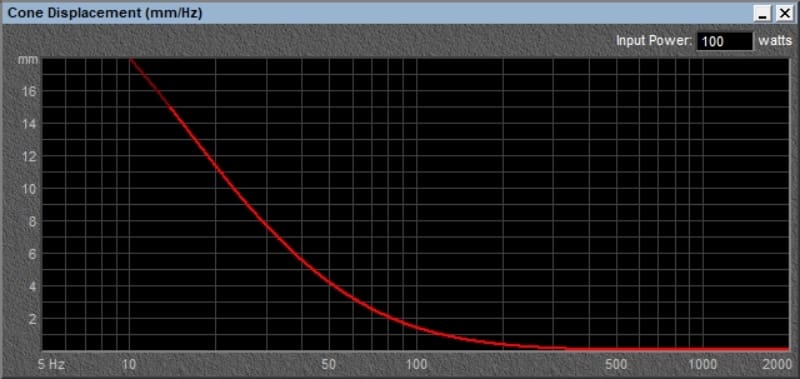
You can see by the shaded area of the red trace that there is an issue below 24.4 hertz. The subwoofer will exceed its Xmax specification of 15 millimeters if fed with 250 watts of power at any frequency at or below 24.4 hertz.
If we put the subwoofer into an enclosure, then power handling increases. Here is the excursion of the subwoofer, in orange, with it installed in a 1.0-cubic-foot enclosure.
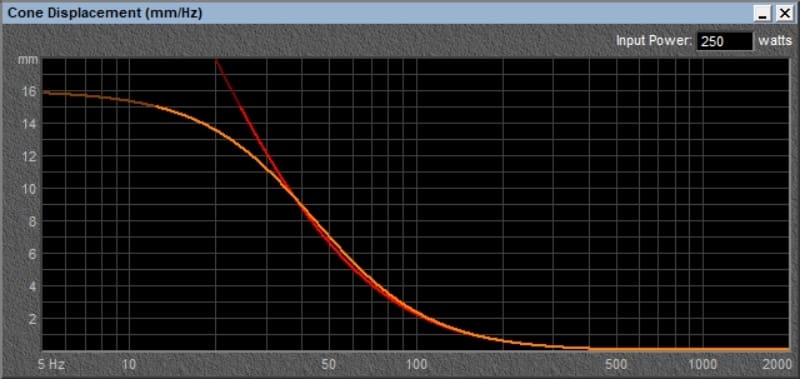
This is why subwoofers need an enclosure. Now, the subwoofer is fine, in terms of excursion, down to 12.5 hertz. Most amplifiers will have started to decrease their output by this frequency, so we’re protected from overdriving the subwoofer.
Subwoofer System Efficiency
As you’d expect, there are benefits and drawbacks to each type of enclosure. The graph below shows the predicted free-field output of the infinite baffle simulation and our 1-cubic-foot enclosure.
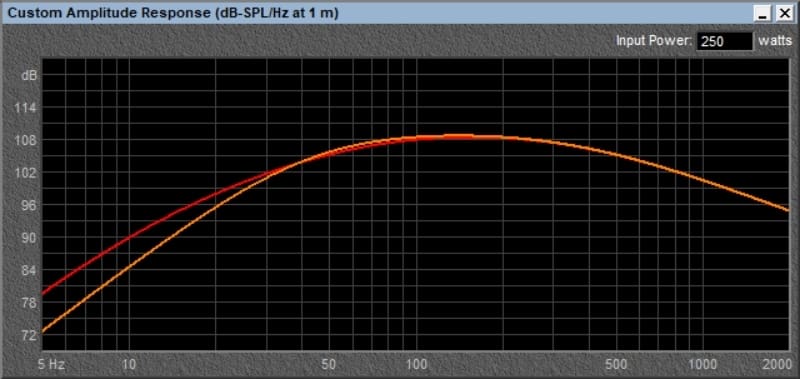
It should come as no surprise that the larger enclosure predicts more output at lower frequencies. However, the red trace doesn’t consider that the subwoofer will exceed its excursion limits below 24 hertz. In reality, the subwoofer would perform similarly in both enclosures in terms of output but starts to distort earlier in the infinite baffle design.
Vented Enclosure Designs
Now, let’s discuss why a vented enclosure is best when designing an affordable subwoofer system. First and foremost, the subwoofer might be limited in how much power it can handle. An affordable subwoofer might only deal with 250 to 300 watts of power before the voice coil might be damaged. Further, the subwoofer might only have 12 to 14 millimeters of excursion capability, rather than 18 or 20 from a high-end offering. This also limits how loudly it can play.
What if an enclosure design increased the efficiency of the subwoofer system and decreased cone excursion? No, this isn’t magic. This perfectly describes a vented subwoofer enclosure, known technically as a bass reflex enclosure. You can learn about how a bass reflex enclosure works in this article.
Let’s look at the predicted output of our 10-inch, 250-watt subwoofer in a vented enclosure (yellow) compared with a sealed enclosure of the same volume (orange).
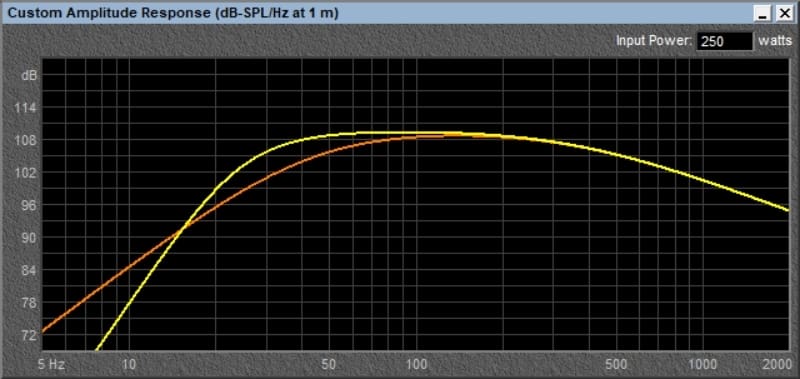
The bass reflex design is louder with the same power at all frequencies above 16 hertz. Specifically, it’s 4.8 dB louder at 30 hertz and 5 dB louder at 40 hertz. That’s like getting the same amount of output but with only 79 watts of power at 40 hertz. If your subwoofer amp is 50% efficient at this power level (which would be typical), then it only needs to draw about 6 amps of current instead of 20. That’s much easier on the vehicle’s electrical system. The reduction in current means the amp will run cooler. It also means the subwoofer voice coil won’t heat up, which reduces power compression.
Back to Cone Excursion
Is there a drawback to a bass reflex enclosure versus a sealed (acoustic suspension) enclosure design regarding power handling? At extremely low frequencies, yes. The cabinet doesn’t control subwoofer cone motion well below the tuning frequency of a bass reflex enclosure. Let’s look at the cone excursion graph of our bass reflex versus sealed enclosure.
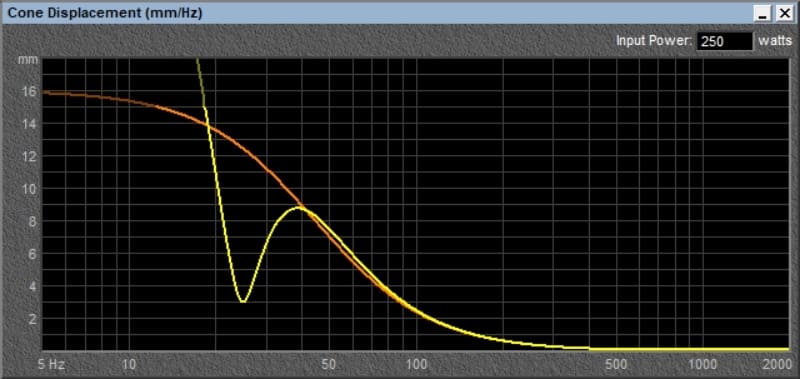
Below 18 hertz, the bass reflex enclosure (in yellow) will have power handling issues. Depending on the music you listen to, this might be cause for concern. If you want to play the cannon blasts from the “1812 Overture” loud, the subwoofer will be mad. It will be mad if you listen to EDM or similar music with lots of infrasonic information. The solution is to set an infrasonic filter at or near 20 hertz.
Subwoofer Distortion Benefits
Aside from their dramatic increase in efficiency, there’s a second benefit to a bass reflex enclosure. As demonstrated in our series of articles about subwoofer distortion, distortion increases with cone excursion. If we look at the last graph, we can see a massive dip in excursion at the bass reflex enclosure tuning frequency. Around this frequency, most of the sound from the enclosure comes from the vent. At 25 hertz, the bass reflex enclosure subwoofer moves about 3 mm in each direction. By contrast, it’s moving 13 millimeters in the sealed enclosure. The bass reflex enclosure will produce significantly less distortion at lower frequencies if the vent is designed correctly. As such, it will sound clearer and more accurate.
Sealed Versus Ported Inexpensive Subwoofer Enclosure
If you want to purchase an affordable subwoofer system for your car or truck, you will need a subwoofer, an amplifier, wiring and an enclosure. The least expensive enclosure is going to be a sealed design. If you can manage the additional cost of a vented enclosure, the system will play louder, sound better and be more efficient. Yes, the enclosure will be a little larger, but it will be like having two subwoofers and almost twice as much power. Drop by a local specialty mobile electronics retailer today and talk with them about the enclosure options available to help you get the most performance from a subwoofer upgrade.
